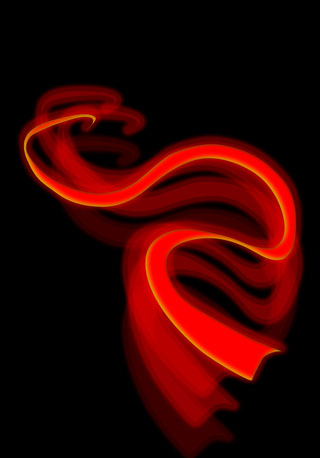Concluding thoughts by François
Matarasso
This
has been a special conference in many ways. It has brought together
an exceptional range of people from many professions and cultural backgrounds.
They have shared not only their insights gained in dance, arts management,
heritage, academia and medicine but also some of their personal experience
of heritage, identity and culture. As a result, artistic, theoretical
and political perspectives have been grounded in individual and shared
reality. The unique combination of art, performance, exposition and
conversation, allowed understanding to deepen not only through reason,
but also through feeling, sense and physicality. What could be more
appropriate for a conference about such a personal and complex matter
as how heritage is expressed, transmitted, changed and transgressed
through dance?
We
have been offered some memorable metaphors. Naseem Khan spoke of how
driving a car requires us to look forward while keeping an eye on the
rear-view mirror, arguing that without an understanding of the past,
we cannot go confidently towards the future. Judy Ling Wong reminded
us that the 'English' cottage garden is a glorious collection of the
world's weeds. Olu Taiwo examined the audience with a magnifying glass,
when we thought we were watching him, Julie and Christian gave a physical
demonstration of how our personal heritage shapes our relationships,
and Eric and Joy brought us together in celebration before singing us
the Leaving of Liverpool. Every participant will take his or her own
images and impressions from this intense but never pressured meeting.
At
the heart of the discussions was the question of what we mean by heritage.
The complexity of the concept was widely agreed. In Ranjit Sondhi's
terms, heritage is fluid, dynamic, unstable, contaminated, above all,
constructed. It changes according to circumstance as we choose to adopt
the identity that seems o be most acceptable and appropriate at the
time. But unlike chameleons, people often adopt identities in opposition
to their surroundings, taking on contrasting colours that differentiate.
Absence provides our heritage as much as presence. Dr Dutta's recessive
and dominant genes resolve themselves to give us our human traits; or
perhaps they sometimes remain a source of dynamic tension, each gaining
or losing strength according to the changing environment.
And
yet there is an irreducible core - Shane Sambu's 'status that is acquired
through birth' - that cannot be made other than it is. Certain things
we inherit from our parents: a place of birth, a mother tongue, some
genes. We can change how we think about these as we use culture and
art to reshape identity, but we cannot change the facts themselves.
To be born female is to inherit a life experience that, in every culture,
will be different from that of those who are born male. One can accept
or reject the cultural consequences, or struggle with them, but not,
at least before adulthood, the biology. To grow up and discover the
world in a particular language shapes a child's understanding of her
or himself: other languages may be learnt, as culture is acquired, but
the first remains the fixed point against which what follows is contrasted.
Naseem
Khan, quoting Peter Badejo, said 'there's no way you'll have a tree
with good leaves without a taproot'. Perhaps that is what heritage is:
the taproot that must produce an elm, an ash or a willow. An apple tree
can blossom and bear fruit, or struggle to thrive in poor soil and strong
wind: it can be cut, trained and transplanted, even grafted - but it
cannot be a cherry tree. Making or finding identity is a common human
experience, though some find it easier than others: part of it is always
about some degree of acceptance.
Interleaved
among these broader debates were questions about the heritage of dance.
Whose dances matter and whose do not? How are they remembered and why
are they forgotten? What histories does dance have or lack? While some
people seemed anxious about the difficulty of recording dance, of preserving
and celebrating past achievements, to me it seems as much an opportunity
as a threat. Dance, like all performing arts, exists in the present.
It challenges the performer and the spectator to be present, to invest
themselves fully in the moment. Dance cannot be owned, so it cannot
easily be controlled. It resists commodification and consumerism. Without
books, it is inscribed in the physical memories of millions of dancers'
bodies. There will never be a museum of dance - though there are places
that preserve old ballet shoes, photographs and programmes - because
dance is living. It is dancers themselves who form the museum of dance.
And
it is dancers who choose what to remember and what to forget. They pass
on to the next generation what they value and the young in their turn
choose what to remember and what to forget. Judy Ling Wong evoked Chinese
artists who see their work as unfinished, believing that others may
take it further than they can. In this concept, being a good teacher
is the real test of an artist's worth, because it is her students who
move the culture on. I began to see dance as a body of knowledge, carried
forward in the imaginations of innumerable dancers who serve rather
than use it. Each of us plays a unique part, now, in the transmission
of humanity's common heritage - which is, in the end, all that we can
call our own.
Among
many impressions and ideas gained in these days, I am infused with gratitude
for the insight, creativity and care so generously shared by all the
participants. I am also grateful for the access to culture from which
I have benefited in the course of my life and for the way it has enabled
me to understand and accept my own heritage. I leave Liverpool with
a renewed conviction that access to culture - on our own terms - is
the foundation of everything that is important about being human.
François
Matarasso
9th
March 2008



